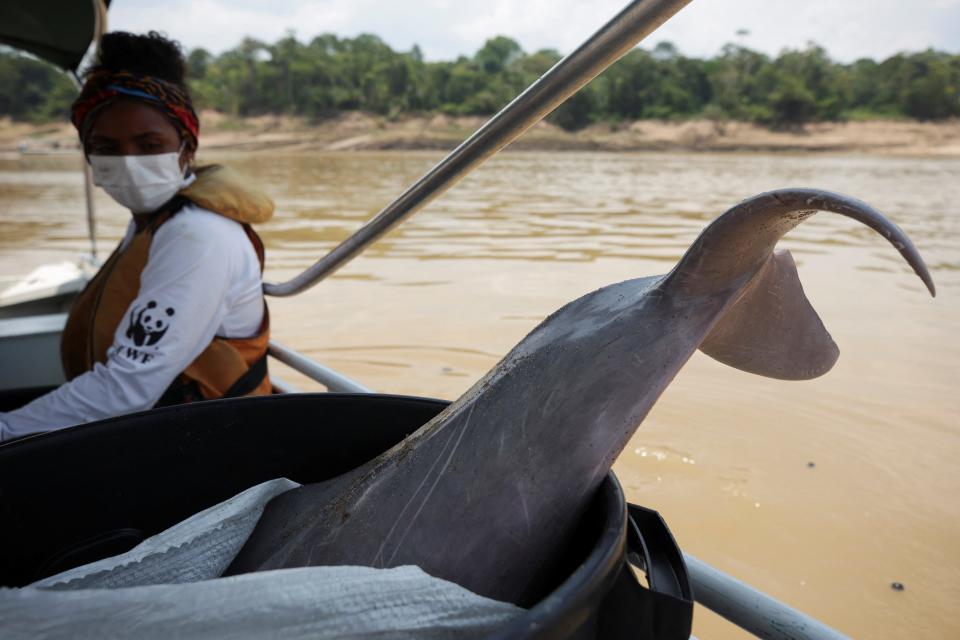-
Lake Tefé in Brazil reached record high temperatures last week amid severe droughts in the area.
-
The water in the lake reached over 102 degrees Fahrenheit, or nearly 39 degrees Celsius.
-
Over 100 dolphins have been died, likely because of the heat, researchers say.
A lake in Brazil reached over 102 degrees Fahrenheit last week, and roughly 125 dead river dolphins have been recovered by researchers or have washed ashore.
The record high temperatures in Lake Tefé, located in the Amazon town of Tefé, Brazil, are accompanied by recent extreme droughts in the Amazon region, according to CNN.

The main party leading the investigation of their deaths, the Mamirauá Institute for Sustainable Development, said that the water is about nine degrees higher than normal, according to the New York Times. Researchers at the institute are investigating multiple potential causes of the deaths, including diseases or pollution, but think the water temperature is the most probable cause, per the Times.
“You see the water covered with carcasses,” said Dr. Miriam Marmontel, one of the institute’s researchers, to the Times.
Marmontel also told the Times the lake turned into a kind of “soup” because of how hot the water became.

“It is common for communities to run into a dead dolphin or two at some point,” said Claudia Sacramento, head of the Environmental Emergencies Division at Chico Mendes Institute for Biodiversity Conservation, to the Washington Post. “Usually they’re just old or sick. But we had never seen something like this before.”
Despite the worry the researchers have for the dolphins — which are, if alive, disoriented and unable to dive — the researchers cannot move them to cooler water, another researcher from the institute, André Coelho, said.

“Transferring river dolphins to other rivers is not that safe because it’s important to verify if toxins or viruses are present [before their transfer],” Coelho told CNN.
Scientists are working on that verification. Over 10 veterinarians are volunteering their services to collect samples for testing and perform necropsies on deceased dolphins, according to the Post.

The number of dolphins that have died represents an enormous section of the river dolphin population — between 5 to 10%, according to Marmontel’s interview with NPR.
But the trouble isn’t over yet for the dolphins, despite their recent devastation. CNN reported that even more severe droughts are expected in the coming weeks, which could be even more deadly for animals in the area.
“We’re getting ready for the worst,” said Adriana Colosio, a veterinarian helping with necropsies, to the Post.
Read the original article on Insider



